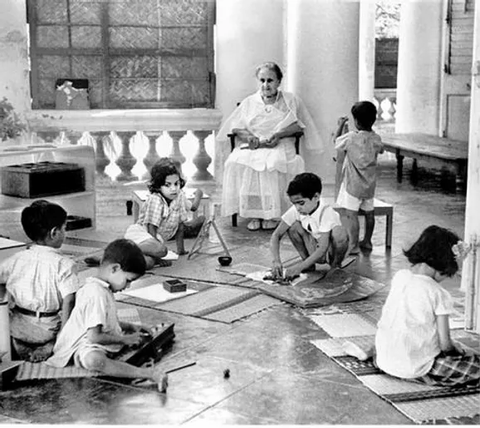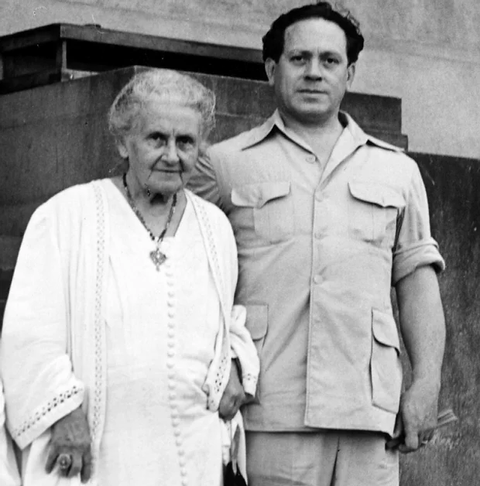Maria Montessori: A Short Biography
Maria Montessori (1870–1952) was an Italian physician, educator, and pioneer of child-centered education. One of the first women to graduate from medical school in Italy, she began her career in medicine before turning to education, where her scientific observations of children led to the development of the Montessori Method. In 1907 she opened the first Casa dei Bambini (Children’s House) in Rome, where she introduced hands-on materials and an environment that fostered independence, self-discipline, and a love of learning.
Her approach quickly gained international attention. By 1911, Montessori schools had opened in Switzerland, the UK, and the United States, and in 1913 she made her first visit to America at the invitation of leading educators. Two years later, at the 1915 San Francisco World’s Fair, Montessori presented her famous “Glass Classroom,” where visitors observed children learning independently—an event that captivated the public and helped spread the Montessori Method across America.
Although enthusiasm in the U.S. waned for a time, Montessori education saw a strong revival after World War II. In 1960, Nancy McCormick Rambusch founded the American Montessori Society (AMS) to adapt Montessori’s principles to American culture and expand Montessori schools nationwide. AMS has since grown into one of the leading Montessori organizations in the world, supporting schools, training programs, and research.
Despite political challenges under fascism in Italy and the closure of her schools, Montessori continued her work worldwide, including in India during World War II. She later addressed UNESCO on education and peace and was nominated for the Nobel Peace Prize three times.
Today, Montessori’s legacy lives on in thousands of schools across the globe, continuing her mission to “aid life, leaving it free to unfold itself.”
- Sources: amsq.org, ami-global.org, sandpipermontessori.org, nndb.com, history.com, dictionary.com, ohioacademyofhistory.org, montesorri.org.au






